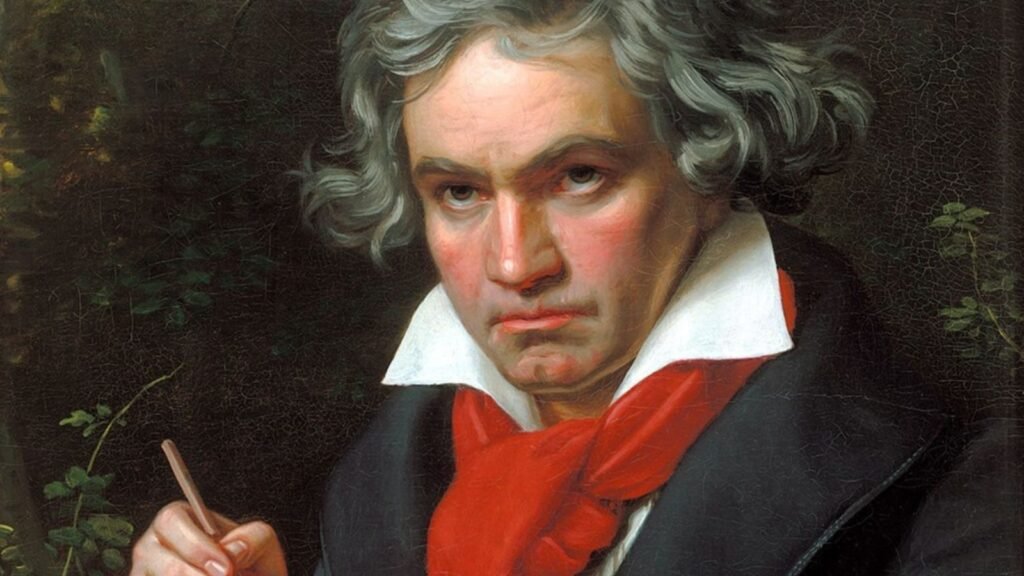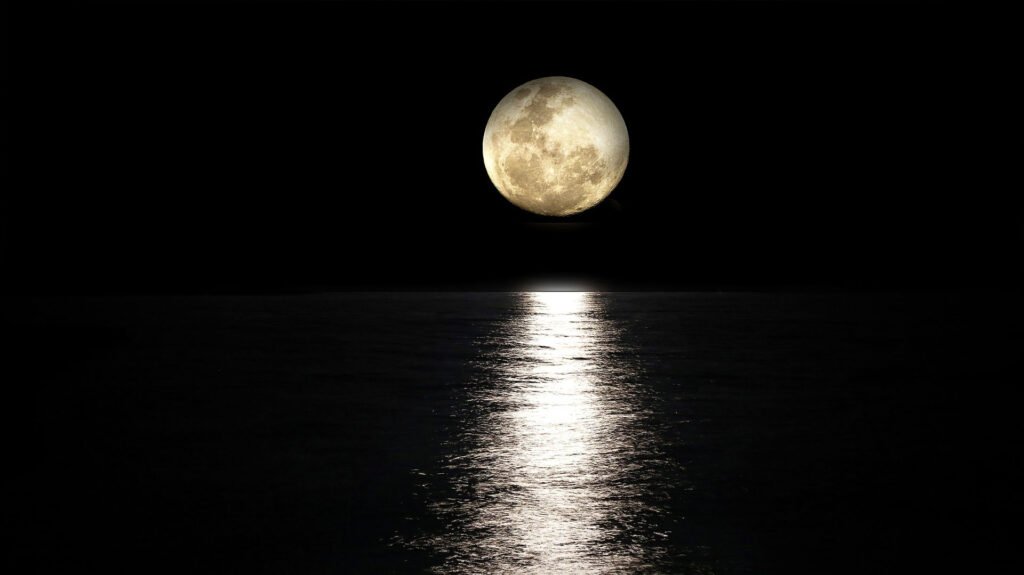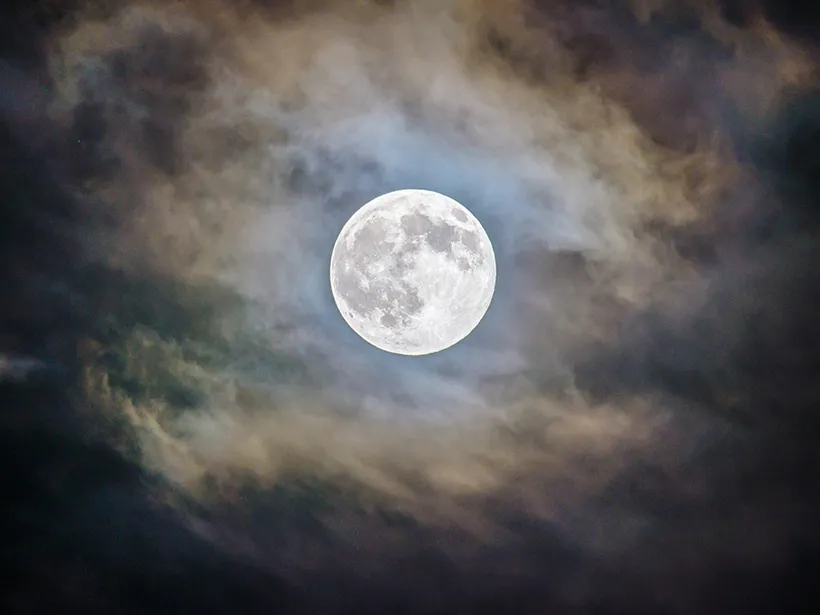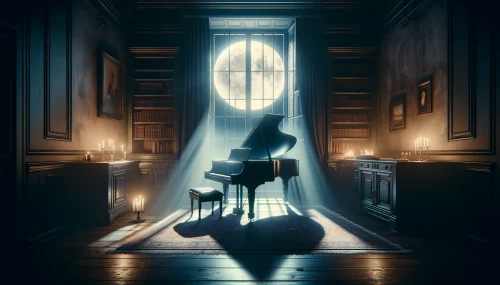Ludwig van Beethoven, a colossus in the landscape of classical music, continues to loom large not just through his symphonies but also through his more intimate compositions for piano. Among these, the “Piano Sonata No. 14 in C♯ minor ‘Quasi una fantasia’, Op. 27, No. 2,” universally known as the Moonlight Sonata, stands apart as a masterpiece that both mystifies and enthralls. Composed in 1801, during a time of personal turmoil and emerging Romantic sentiment in art, Beethoven’s sonata deviates from traditional structures, enveloping its audience in a continuous, hauntingly introspective narrative that still resonates today.
The Moonlight Sonata has captivated listeners and musicians for over two centuries, offering a deep well of emotional resonance and technical prowess that challenges and rewards in equal measure. Its popularity is sustained not just by its melodic beauty and technical complexity, but also by its ability to evoke a profound sense of melancholy and introspection. This piece seems to transport listeners across time and space, embodying a spectrum of human emotions from despair to hope, solitude to serenity.
Delve beyond the surface allure of the Moonlight Sonata to explore its deeper musical, emotional, and historical contexts. By unraveling the layers of Beethoven’s composition, we will uncover how this seminal work reflects the composer’s inner life and innovations, influences the evolution of classical music, and continues to impact and inspire the cultural fabric of our modern world. Through this exploration, we hope to enhance our appreciation of the sonata’s enduring legacy and its capacity to speak profoundly to the human experience.
Historical Context

The “Moonlight Sonata” was composed in 1801, a period marked by personal challenges and significant creative output for Ludwig van Beethoven. At this time, Beethoven was grappling with the irreversible decline of his hearing, an affliction that stirred a profound existential crisis yet paradoxically fueled his artistic innovation. Living in the Viennese cosmopolitan milieu, he was exposed to the burgeoning Romantic ideals that emphasized expression, emotion, and individualism, diverging sharply from the Classical restraint. This cultural shift profoundly influenced Beethoven’s compositions, pushing him towards more personal and expressive forms of musical narrative.
Beethoven dedicated the sonata to Countess Giulietta Guicciardi, a pupil of his with whom he had developed a close, albeit unrequited, relationship. This personal connection may have intensified the emotional depth and the expressive quality of the sonata, as the composer navigated through his complex feelings for his pupil and his own isolating deafness. This piece represents a pivotal moment in Beethoven’s life, embodying the transition from the loss of one world—a world of sound—to the discovery of another, where emotional depth could be conveyed in silence and notes alone.
Initial Reception
Upon its publication in 1802, the sonata was met with favorable reception, admired for its beauty and innovative structure. However, it was not until several years after Beethoven’s death that the sonata acquired the nickname “Moonlight Sonata,” attributed to the German music critic and poet Ludwig Rellstab. In 1832, Rellstab likened the effect of the first movement to that of moonlight shining upon Lake Lucerne, and this poetic comparison struck a chord with the public and critics alike. This nickname, though never endorsed by Beethoven—who preferred his works to be appreciated without programmatic titles—has since become almost as famous as the composition itself.
Musical Analysis

The “Moonlight Sonata” consists of three contrasting movements, each contributing to the overall narrative and emotional journey of the piece. The first movement, Adagio sostenuto, is perhaps the most famous, characterized by its dreamlike quality and ethereal tranquility. It features a triplet figuration in the right hand over a sequence of modulating chords in the left, creating a persistent, flowing texture that has a hypnotic effect.
The second movement, Allegretto, serves as a brief, light interlude between the intense emotions of the first and third movements. It is more structured and dance-like, reminiscent of a minuet, and offers a moment of respite with its more upbeat and straightforward character.
The final movement, Presto agitato, is a dramatic and vigorous conclusion to the sonata. It returns to C♯ minor, featuring rapid and turbulent motion that conveys a sense of urgency and passion. This movement is technically demanding, with a relentless pace and dynamic contrasts that build to a powerful climax.
Key Musical Features
Beethoven’s compositional techniques in the “Moonlight Sonata” are notable for their innovative use of form, tempo, dynamics, and melody. The first movement notably deviates from traditional sonata form; instead of a fast-paced allegro, it unfolds slowly, allowing the adagio sostenuto to establish a deeply reflective atmosphere. This movement’s use of sustained, soft dynamics throughout, punctuated by occasional fortes, creates a profound sense of longing and introspection.
The second movement, in contrast, adheres more closely to classical norms but is unique in its brevity and placement as a bridge rather than a standalone centerpiece. Its rhythmic melody and clearer texture contrast sharply with the surrounding movements.
In the third movement, Beethoven exploits extreme tempo and dynamic changes, using rapid scales and arpeggios to drive the emotional intensity. The presto agitato is relentless, with a complex overlay of rhythms and technical demands that push the boundaries of expressive piano playing.
Innovative Elements
Beethoven’s departures from traditional sonata form are particularly evident in the structuring and thematic development of the “Moonlight Sonata.” Traditionally, sonatas employed a fast-slow-fast movement arrangement, but Beethoven subverts this by starting with a slow, contemplative movement that sets a somber mood, thereby inverting expectations.
His use of harmony and rhythm in the sonata also marked a significant innovation. The haunting use of a C♯ minor tonality throughout the first and last movements creates a cohesiveness and emotional depth that were quite unconventional at the time. The rhythmic uniformity of the first movement, with its continuous triplets, was also a novel technique, creating a flowing, almost timeless space for the melody to breathe and evolve.
Emotional and Philosophical Interpretation

The “Moonlight Sonata” is a profound exploration of emotion, conveyed through Beethoven’s masterful manipulation of musical elements across the three movements. The first movement, Adagio sostenuto, is imbued with a sense of deep melancholy and introspection. Its steady, somber triplets and lingering melodies create a reflective space that seems to mirror Beethoven’s own struggles with his encroaching deafness and the accompanying sense of isolation. Yet, there is also a serene beauty and resilience in the persistence of the melody, suggesting an underlying strength amidst despair.
The second movement, Allegretto, acts as a momentary diversion from the emotional intensity, providing a lighter, almost optimistic contrast. Here, the emotional conveyance is subtle, hinting at human resilience and the capacity to find moments of joy and lightness even in the midst of trials.
The final movement, Presto agitato, is a turbulent and passionate outpouring that can be seen as a reflection of Beethoven’s defiant spirit against his personal adversities. The rapid, agitated tempo and dynamic contrasts illustrate a tumultuous, almost confrontational resistance to fate, culminating in a powerful assertion of the human will.
Philosophical Themes
Beethoven’s “Moonlight Sonata” not only delves into deep emotional realms but also touches on broader existential themes. The overall progression from somberness to turbulence can be interpreted through the lens of tragedy, fate, and ultimately, transcendence. The first movement’s subdued sorrow speaks to the tragic acceptance of one’s destiny, a theme that resonates with Beethoven’s own acceptance of his deafness.
The transition to the more animated second movement reflects a philosophical mediation on fate—acknowledging its presence but also demonstrating the human capacity to endure and create moments of happiness despite it. Finally, the explosive energy of the third movement transcends the resignation of the first, symbolizing an intense, almost heroic struggle against the limitations imposed by fate. This can be seen as an embodiment of the Romantic ideal that through the force of will and passion, individuals can transcend their circumstances and reach towards higher, almost spiritual realms of experience.
Cultural and Lasting Impact

The “Moonlight Sonata” has exerted a profound influence on the development of music, echoing through the corridors of classical compositions and beyond. Beethoven’s innovative approach in the sonata—particularly its emotional depth and structural uniqueness—inspired generations of composers to explore more expressive and dramatic forms. The first movement’s haunting adagio has been emulated and referenced by composers such as Chopin and Debussy, who sought to capture similar atmospheric and introspective qualities in their piano works.
Beyond the realms of classical music, the sonata’s influence extends into contemporary genres. Its motifs and themes have been adapted into various formats, including jazz improvisations, film scores, and even electronic music, demonstrating its versatility and enduring appeal. The emotive content of the sonata makes it a favorite for reinterpretation, allowing artists across genres to infuse it with their own cultural and musical perspectives.
Modern Relevance
The “Moonlight Sonata” continues to maintain a significant presence in modern media and popular culture, underscoring its timeless relevance. In film and television, the sonata often serves as a backdrop for scenes that require a deep emotional resonance, enhancing narratives with its somber and introspective tones. Movies such as “Immortal Beloved,” which explores Beethoven’s life and legacy, utilize the sonata to underscore key emotional and narrative moments, connecting audiences with the composer’s inner world.
On digital media platforms, the “Moonlight Sonata” finds new life in social media posts, YouTube performances, and even in interactive educational content that seeks to demystify classical music for a broader audience. Its adaptability to various media formats—from traditional concert halls to virtual reality experiences—speaks to its profound impact and the versatility of its composition.
Moreover, the “Moonlight Sonata” is frequently used in educational settings as a fundamental piece for studying piano, offering students a deep dive into emotional expression and advanced techniques, which perpetuates its influence. This educational role not only preserves its status as a central piece of the classical repertoire but also ensures that it continues to inspire and influence musicians and listeners alike.
In sum, the cultural footprint of Beethoven’s “Moonlight Sonata” is vast and varied. Its ability to transcend musical genres and adapt to modern media illustrates not only the universal qualities of its composition but also its ongoing relevance and capacity to resonate with diverse audiences across time and space.
